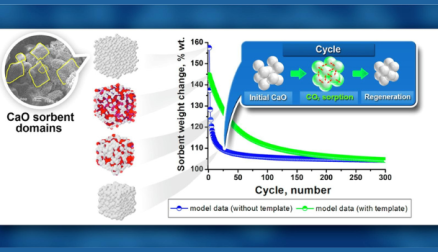
Mathematical modeling of porous materials and processes for CO₂ capture
One of the research areas at the Department of Mathematics, Faculty of Science, UJEP focuses on the study of porous materials whose structure changes as a result of external physical or chemical processes. These changes significantly affect the function of materials used, for example, for carbon dioxide (CO₂) capture, and therefore require modifications to existing models and the development of new methods.
Specifically, the research deals with:
- mathematical modeling of sintering, i.e., the sintering of particles at high temperatures, which reduces the efficiency of filtration materials,
- changes in the chemical properties of sorbents, with the aim of designing materials with a higher capacity to absorb CO₂,
- erosion processes in rocks during liquid CO₂ injection – one of the methods of geological sequestration,
- and the use of computational topology to analyze the development of pore structure during chemical dissolution.
We use theoretical and numerical methods, such as level set methods and phase fields, and work with computational tools in C++, Matlab, and GPU-based calculations.
The results of this research contribute to the improvement of air purification technologies and effective carbon dioxide storage, i.e., solutions with a direct impact on climate sustainability.
🎥 Watch the video and take a look at another of our department’s research areas.